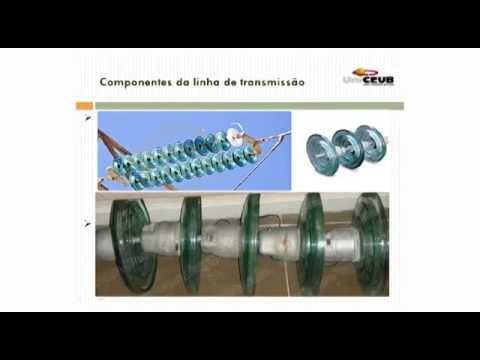Understanding Backflash
Summary
TLDRThis video explains the behavior of transmission systems during lightning strikes, focusing on how high voltage can cause insulator flashovers and system interruptions. It contrasts two scenarios: one where high tower ground resistance leads to a flashover and a system blink, and another where a transmission line arrester clamps the voltage, preventing flashover and ensuring smooth system recovery without outages. The video highlights the protective role of arresters in maintaining system integrity and preventing damage to critical components, ensuring minimal disruption and efficient fault handling.
Takeaways
- 😀 Lightning strokes can conduct current to the ground via the overhead ground wire in shielded systems.
- 😀 If tower ground resistance is too high, the voltage at the base of the insulator can increase to dangerous levels.
- 😀 When the voltage exceeds the insulator’s withstand level, it can cause a back flash from the tower to the phase conductor.
- 😀 After the lightning stroke, ionized air along the insulator remains, creating a path for the AC voltage to flash over from phase to earth.
- 😀 The second flashover after the lightning strike causes power system current to flow to the ground.
- 😀 The current from the second flashover can only be interrupted by the breaker at the substation, leading to a brief system outage or 'blink'.
- 😀 A transmission line arrester can prevent a flashover by clamping the voltage across the insulator to safe levels.
- 😀 During clamping, the lightning current flows backward through the arrester onto the phase conductor, minimizing damage.
- 😀 The lightning current flowing through the arrester is manageable (a few thousand amps) and can be easily handled by the station arresters.
- 😀 After the lightning strike, the arrester turns off, restoring the system without any fault or breaker operation, ensuring no blink or damage to the insulators.
Q & A
What happens when a lightning stroke hits an overhead ground wire in a shielded system?
-When a lightning stroke hits the overhead ground wire, it conducts the current to ground through its dowr. If the tower ground resistance is too high, the voltage at the base of the phase insulator increases.
Why is the voltage at the base of the phase insulator important?
-The voltage at the base of the phase insulator is critical because if it increases enough, it can exceed the withstand level of the insulator, potentially causing a back flash from the tower to the phase conductor.
What is a back flash and why does it occur?
-A back flash occurs when the voltage at the base of the phase insulator exceeds the withstand level, causing a flashover from the tower to the phase conductor, allowing current to flow to the ground.
What role does ionized air play in the lightning strike aftermath?
-After the lightning strike, ionized air remains along the insulator for about 100 micros, which provides a path for the normal AC voltage to flash over from the phase conductor to the earth.
What is the consequence of the second flashover?
-The second flashover causes power system current to flow to ground, leading to an interruption of the power supply, which is only interrupted by the breaker at the substation.
What causes a 'blink' on the system?
-The 'blink' on the system is caused by the breaker operation at the substation after the second flashover, leading to a momentary outage.
How does a transmission line arrester change the scenario when lightning strikes the overhead ground wire?
-If a transmission line arrester is installed, instead of a flashover of the insulator, the arrester clamps the voltage across the insulator to levels below its flashover threshold, preventing damage.
What happens to the lightning current when an arrester is used?
-The lightning current flows backwards through the arrester onto the phase conductor, and since the current is only a few thousand amps, it can be handled easily by station arresters.
What happens after the lightning strike when an arrester is used?
-After the lightning strike, the arrester turns off, and the system is restored without any fault or breaker operation, meaning there is no blink on the system.
What are the benefits of using a transmission line arrester in this context?
-The benefits of using a transmission line arrester include preventing a flashover of the insulator, avoiding system outages or blinks, and preventing potential damage to the insulators, ensuring smooth restoration of the system.
Outlines

This section is available to paid users only. Please upgrade to access this part.
Upgrade NowMindmap

This section is available to paid users only. Please upgrade to access this part.
Upgrade NowKeywords

This section is available to paid users only. Please upgrade to access this part.
Upgrade NowHighlights

This section is available to paid users only. Please upgrade to access this part.
Upgrade NowTranscripts

This section is available to paid users only. Please upgrade to access this part.
Upgrade NowBrowse More Related Video

A-13 TRANSMISSÃO DE ENERGIA ELÉTRICA : AVALIAÇÃO DOS ISOLADORES

How to Stay Safe in a Lightning Storm

Bagaimana petir dan kilat terjadi dan apa hubungannya dengan listrik statis?

What is a Lightning Arrester

sistem transmisi listrik

Transmission system development , Important components of transmission system
5.0 / 5 (0 votes)